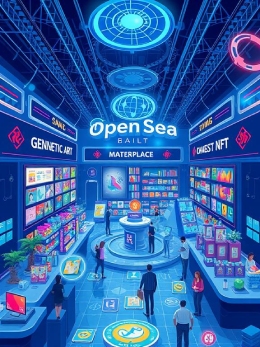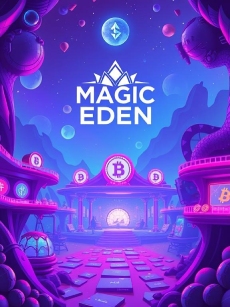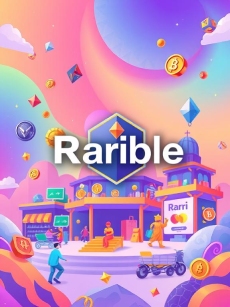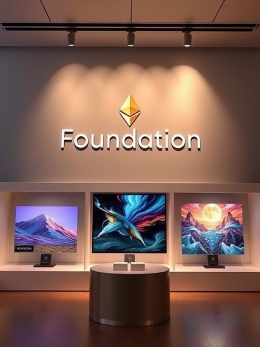NFTs (Non-Fungible Tokens) have reshaped how we engage with digital content, ownership, and decentralized technology. From digital art to in-game items and music rights, NFTs are unlocking new ways for creators and collectors to interact, transact, and build communities. But with so many marketplaces available, how do you know where to start? The right platform depends on your goals—whether you're buying, selling, or simply exploring.
Here's a comprehensive look at the top five NFT marketplaces in 2025 that are dominating the scene.
OpenSea: The Largest NFT Marketplace

OpenSea has held the crown as the largest and most active NFT marketplace since 2017. With billions in transaction volume and millions of active users, it's often the first stop for anyone entering the NFT world. It hosts everything from generative art and collectibles to music, video, and virtual land.
Why It Stands Out
The platform is decentralized and highly accessible, allowing anyone to mint, buy, or sell NFTs. Its user-friendly interface and rich filtering tools make navigation easy—even for newcomers. OpenSea also supports gasless transactions on Polygon, helping users avoid high Ethereum fees.
Key Features
- Massive inventory across multiple categories.
- Integration with Ethereum, Polygon, and Base.
- Creator royalties and metadata permanence.
- User activity tracking, watchlists, and favourite collections.
- OpenSea Studio for minting and collection management.
Use Case
Perfect for collectors looking for variety and creators wanting a wide audience without technical barriers.
Blur - A Marketplace for Pro Traders

Blur entered the scene in late 2022 and quickly carved out a niche among professional NFT traders. With lightning-fast performance, live analytics, and zero trading fees, Blur caters to users who treat NFT trading more like stock market activity than casual collecting.
Why It Stands Out
Blur doesn't just display NFTs—it provides an ecosystem where users can analyze market trends, snipe deals, and bulk manage portfolios. It even incentivizes trading activity through its native token ($BLUR), rewarding users based on engagement.
Key Features
- Real-time floor tracking and price feeds.
- Advanced filtering by trait, rarity, and collection volume.
- Floor sweeping (bulk buy) tools.
- Integration with OpenSea listings for cross-platform liquidity.
- Incentivized participation through airdrops and staking.
Use Case
Best for high-volume traders and NFT flippers looking to maximize liquidity and speed.
Magic Eden: Dominating Solana NFTs

Magic Eden is the number-one marketplace for NFTs on the Solana blockchain. Thanks to Solana's fast and cheap transactions, Magic Eden is a favourite among developers, gamers, and communities building in Web3.
Why It Stands Out
More than just a marketplace, Magic Eden functions like a launchpad, community hub, and event host. It recently expanded to support Bitcoin Ordinals and Ethereum-based NFTs, marking a significant move toward cross-chain NFT accessibility.
Key Features
- Low transaction costs and high-speed transactions.
- Launchpad for up-and-coming NFT projects.
- In-house wallet and marketplace rewards.
- Listings in SOL, ETH, or BTC, depending on the collection.
- Active partnerships with Web3 games and NFT projects.
Use Case
Ideal for users already in the Solana ecosystem or those looking for affordable NFT entry points.
Rarible - A Community-Owned Platform

Rarible is a unique multi-chain NFT marketplace focused on decentralization and creator empowerment. It was one of the first marketplaces to experiment with community governance via its $RARI token, giving users a voice in platform direction.
Why It Stands Out
Rarible's ethos is community-first. It supports several chains (Ethereum, Tezos, Flow, and Polygon) and gives creators flexibility with minting and royalties. Users can also set up custom storefronts, effectively creating their own branded NFT marketplaces.
Key Features
- DAO governance through $RARI.
- Royalty enforcement across blockchains.
- Supports Ethereum, Tezos, Polygon, Flow.
- White-label storefronts for brands and artists.
- Eco-friendly minting with proof-of-stake chains.
Use Case
Great for creators who want control, community engagement, and the ability to build a personal NFT brand.
Foundation - For High-End Digital Art

The foundation is a curated, art-focused NFT platform known for its minimalist interface and premium digital art collections. It's Ethereum-based, and hosts work from many of the Web3 art world's top creators.
Why It Stands Out
The foundation's invite-only approach for creators helps maintain a high level of artistic quality. The platform also provides tools for storytelling and artist promotion, including collector insights and auction-based sales.
Key Features
- Clean, gallery-style browsing experience.
- Live auctions and reserve pricing.
- Collectors' profiles and curation features.
- Artist collaboration and referral systems.
- Popular with photographers, digital painters, and 3D artists.
Use Case
A perfect platform for fine art collectors and professional artists looking for a premium marketplace with high visibility.
Conclusion
The NFT environment is more diverse than ever, with a multitude of marketplaces serving every kind of user—from new creators minting their first piece to blue-chip flipping old-timers. The right platform to use is all about knowing what you are after: do you want to invest, collect, create, or experiment? Since each marketplace offers different features, tools, and communities, the smartest solution might even involve utilizing several marketplaces, depending on what you are attempting to do.